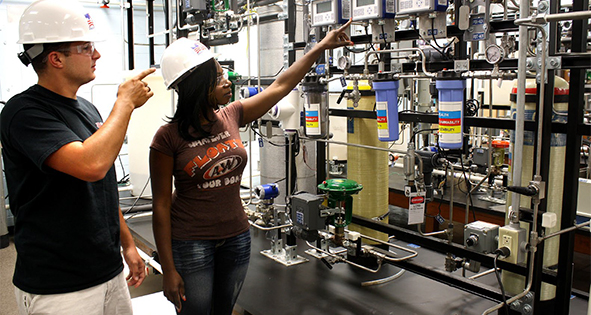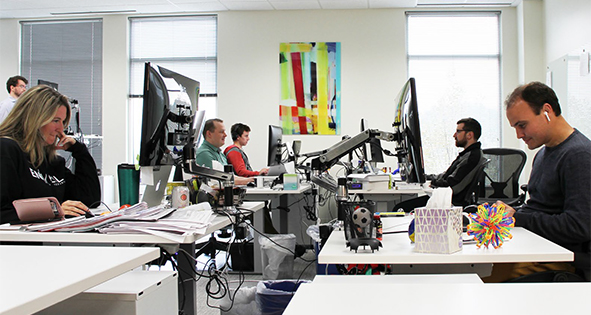
Oklahoma: In the Midst of Transformation
18 Jul, 2016
By Lori Culpepper
Oklahoma is in the midst of an intense economic transformation. Increased research and development in industry sectors such as agriculture, bioscience, energy and aerospace, combined with a strong workforce development program have turned the Sooner State into a hub of innovation and business potential. All of this has given rise to one of the fastest-growing economies in the country, says Oklahoma Secretary of Commerce and Tourism, Deby Snodgrass.
Gov. Mary Fallin has made it a key priority to give Oklahomans a better quality of life, primarily by creating jobs and strengthening the economy.
Through a coalition of state agencies, educational institutions, businesses and other partners, the state is working to align and transform workforce and training services with the goals of ensuring that the state meets labor demands and that Oklahoma citizens obtain wealth-building occupations.
The U.S. is facing a growing skills gap in its workforce. Snodgrass says Oklahoma’s challenge will be increasing the number of students with workforce credentials or associate degrees, as well as increasing the number of college graduates. The state has restored more than $150 million in education funds that were cut during the Great Recession.
“Mid-America Delivers” is a collaborative effort between the Mid-America Industrial Park in Pryor, Oklahoma and Mayes County schools. This includes more than 70 businesses, several of which are Fortune 500 companies. As the largest cluster of private employers in the region, they need hundreds of workers every year who are trained in advanced manufacturing, electrical work, medical services and more. Through this program, K-12 students have the chance to take tours of these businesses, which are encouraged to place them in internships. The goal is to expose students to the job and career options available after graduation, as well as the skill-sets they will need to obtain those jobs.
High school students have the opportunity to be concurrently enrolled in classes to pursue a degree or credential in a career-area they choose by earning hours toward a college degree or career tech certificate, in addition to their high school diploma. By the time they leave high school, they will already have a career path option and the necessary skills to pursue it.
To make sure they are duplicating success stories like this across the state, Fallin has established a team to launch a new program called “Oklahoma Works.” This is a cooperative effort between the public and private sector designed to strengthen the talent pipeline between K-12 education, career technology centers, higher education institutions and businesses. She says that many times businesses across the state cannot find the employees they need to fill jobs. Meanwhile, students enter the workforce every year looking for the right job to match their education and skill-set. Oklahoma Works is designed to realign education and work-skill training systems to better meet the needs of both students and employers.
Oklahoma’s pro-business climate is largely due to forward-thinking business incentives and effective legislative reforms for workers compensation and tort statutes, coupled with tax cuts. The positive impact of these changes can be felt across the state’s key industry sectors: Aerospace & Defense, Agriculture, Bioscience, Energy, Information & Financial Services, Manufacturing and Transportation & Distribution.
Oklahoma offers distinct advantages to businesses seeking to relocate, including a low cost of living, a state government determined to support businesses and to grow the labor force, a regulatory climate that is both responsible and reasonable, and an educated, flexible and committed workforce.
Elk City
By Rachel Hamilton
“Elk City is located about halfway between Oklahoma City and Amarillo, Texas,” says Director of Economic and Community Development for the City of Elk City, Jim Mason.
“We just completed a brand new industrial park,” he says. The park is the third in Elk City and covers 130 acres with “all utilities and streets in place.” The first tenant completed construction on a 20,000 square foot facility and is already “looking to expand that by a third.”
The new industrial park is just over a mile from Interstate 40, which Mason says is a draw for logistics and distribution. Elk City is the “home of the Bar S Distribution Center, running about 200 trucks in and out a week.”
Elk City has been growing at exponential rates, “largely due to the oil and gas industry,” says Mason.
“We have about 140 oil and gas related companies in our town. With the downturn in the price of oil,” he says, they have seen downsizing, though no complete closings. “Our labor force has actually increased during this time.”
Elk City is making sure its workforce gets educated. “We’re building a brand new elementary school to replace two other elementary schools,” Mason says. “[…] we just raised $1.6 million in scholarships for graduating high school seniors.” The Career Technology Center has two nearby campuses and a small branch campus in Elk City.
“Elk City collects more sales tax than any community in western Oklahoma—other than Lawton, which has 100,000 people. We are a shopping center for western Oklahoma,” says Mason.
Elk City is also 18 miles from the Oklahoma Space Port, which has a three mile long runway that is 300 feet wide. It is currently mainly in use for air force takeoff and landing practice, according to Mason.
“We’re looking for some development in that area,” he says. “Obviously we would like something aviation related. We’ve been working with unmanned aerial systems in the area.”
The city is looking at unmanned aerial vehicles, precision agriculture and wind energy.
“We have a significant number of wind turbines now,” Mason says, explaining that they would like to attract a components manufacturer or even a company producing “something as simple as a UAV to inspect blades.”
Related Posts
-

Business Starts Here
-

TEXAS ENTERS 2021 AS WORLD’S 9TH LARGEST ECONOMY BY GDP
-

CALIFORNIA: 5TH LARGEST ECONOMY IN THE WORLD
-

MINNESOTA: FIRST IN FIVE-YEAR BUSINESS SURVIVAL RATE
-

CANADA: Alberta. More Open Than Ever
-

KENTUCKY: The Bluegrass State Is The Right Place To Grow Your Business
-

TENNESSEE: Great Brands Deserve the Great State of Tennessee
-

LOUISIANA: Custom Workforce for Expanding
-

MARYLAND: Home of Innovators
-

MAINE: Yankee Ingenuity









